CXCR5 Products
CXCR5, also known as Burkitt Lymphoma Receptor 1, is a G protein-coupled receptor (GPCR) member of the CXC subfamily of chemokine receptors. Human CXCR5 is 372 amino acids (aa) in length with a predicted molecular weight of 42 kDa. Mouse and rat CXCR5 share 83% and 81% aa sequence identity with the human protein, respectively. CXCR5 is primarily expressed on B cells and binds CXCL13/BCL/BCA-1. The CXCL13/BCL/BCA-1:CXCR5 axis regulates B cell migration within secondary lymphoid organs such as the spleen and Peyer’s patches. CXCR5 is also expressed on follicular helper T cells and dermal-derived migratory dendritic cells where it is thought to promote the humeral immune response by meditating germinal center reactions and B cell activation. Polymorphisms of CXCR5 are associated with multiple types of non-Hodgkin’s lymphoma, and it is expressed on Burkitt’s lymphoma cells.
96 results for "CXCR5" in Products
96 results for "CXCR5" in Products
CXCR5 Products
CXCR5, also known as Burkitt Lymphoma Receptor 1, is a G protein-coupled receptor (GPCR) member of the CXC subfamily of chemokine receptors. Human CXCR5 is 372 amino acids (aa) in length with a predicted molecular weight of 42 kDa. Mouse and rat CXCR5 share 83% and 81% aa sequence identity with the human protein, respectively. CXCR5 is primarily expressed on B cells and binds CXCL13/BCL/BCA-1. The CXCL13/BCL/BCA-1:CXCR5 axis regulates B cell migration within secondary lymphoid organs such as the spleen and Peyer’s patches. CXCR5 is also expressed on follicular helper T cells and dermal-derived migratory dendritic cells where it is thought to promote the humeral immune response by meditating germinal center reactions and B cell activation. Polymorphisms of CXCR5 are associated with multiple types of non-Hodgkin’s lymphoma, and it is expressed on Burkitt’s lymphoma cells.
Clone 51505 was used by HLDA to establish CD designation
| Reactivity: | Human |
| Details: | Mouse IgG2b Monoclonal Clone #51505 |
| Applications: | Flow, IHC, CyTOF-reported, ICC, Neut |
Clone 51505 was used by HLDA to establish CD designation
| Reactivity: | Human |
| Details: | Mouse IgG2b Monoclonal Clone #51505 |
| Applications: | Flow |
Clone 51505 was used by HLDA to establish CD designation
| Reactivity: | Human |
| Details: | Mouse IgG2b Monoclonal Clone #51505 |
| Applications: | Flow |
Recombinant Monoclonal Antibody.
| Reactivity: | Human, Mouse, Rat |
| Details: | Rabbit IgG Monoclonal Clone #JB11-40 |
| Applications: | IHC, WB, Flow |
Clone 51505 was used by HLDA to establish CD designation
| Reactivity: | Human |
| Details: | Mouse IgG2b Monoclonal Clone #51505 |
| Applications: | Flow |
| Reactivity: | Mouse |
| Details: | Rat IgG2a Monoclonal Clone #614641 |
| Applications: | Flow, CyTOF-reported, ICC |
| Reactivity: | Mouse |
| Details: | Rat IgG2a Monoclonal Clone #614641 |
| Applications: | Flow |
| Reactivity: | Human, Monkey, Primate |
| Details: | Rabbit IgG Polyclonal |
| Applications: | IHC |
| Reactivity: | Mouse |
| Details: | Goat IgG Polyclonal |
| Applications: | Flow, CyTOF-ready |
Recombinant Monoclonal Antibody.
| Reactivity: | Human |
| Details: | Mouse IgG2b Monoclonal Clone #51505R |
| Applications: | IHC |
Clone 51505 was used by HLDA to establish CD designation
| Reactivity: | Human |
| Details: | Mouse IgG2b Monoclonal Clone #51505 |
| Applications: | Flow |
Recombinant Monoclonal Antibody
| Reactivity: | Human, Mouse, Rat |
| Details: | Rabbit IgG Monoclonal Clone #9Q10I2 |
| Applications: | WB, ICC/IF, ELISA |
Clone 51505 was used by HLDA to establish CD designation
| Reactivity: | Human |
| Details: | Mouse IgG2b Monoclonal Clone #51505 |
| Applications: | Flow |
| Reactivity: | Mouse |
| Details: | Rat IgG2a Monoclonal Clone #614641 |
| Applications: | Flow |
Clone 51505 was used by HLDA to establish CD designation
| Reactivity: | Human |
| Details: | Mouse IgG2b Monoclonal Clone #51505 |
| Applications: | Flow |
| Reactivity: | Mouse |
| Details: | Rat IgG2a Monoclonal Clone #614641 |
| Applications: | Flow |
Clone 51505 was used by HLDA to establish CD designation
| Reactivity: | Human |
| Details: | Mouse IgG2b Monoclonal Clone #51505 |
| Applications: | Flow |
Clone 51505 was used by HLDA to establish CD designation
| Reactivity: | Human |
| Details: | Mouse IgG2b Monoclonal Clone #51505 |
| Applications: | Flow |
Clone 51505 was used by HLDA to establish CD designation
| Reactivity: | Human |
| Details: | Mouse IgG2b Monoclonal Clone #51505 |
| Applications: | Flow |
| Reactivity: | Mouse |
| Details: | Rat IgG2a Monoclonal Clone #614641 |
| Applications: | Flow |
| Reactivity: | Mouse |
| Details: | Rat IgG2a Monoclonal Clone #614641 |
| Applications: | Flow |
| Reactivity: | Mouse |
| Details: | Rat IgG2a Monoclonal Clone #614641 |
| Applications: | Flow |
| Reactivity: | Mouse |
| Details: | Rat IgG2a Monoclonal Clone #614641 |
| Applications: | Flow |
| Reactivity: | Mouse |
| Details: | Rat IgG2a Monoclonal Clone #614641 |
| Applications: | Flow |

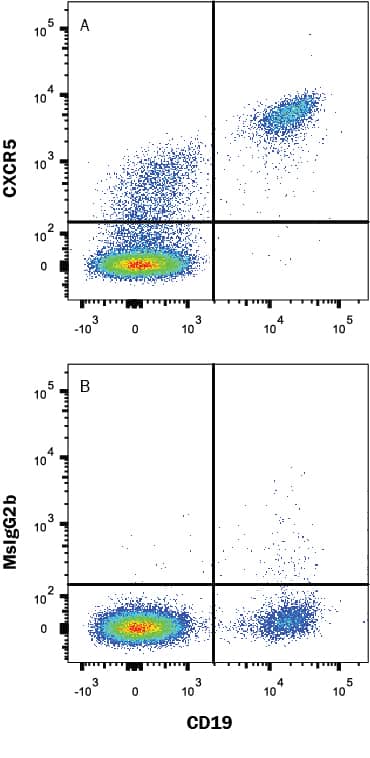

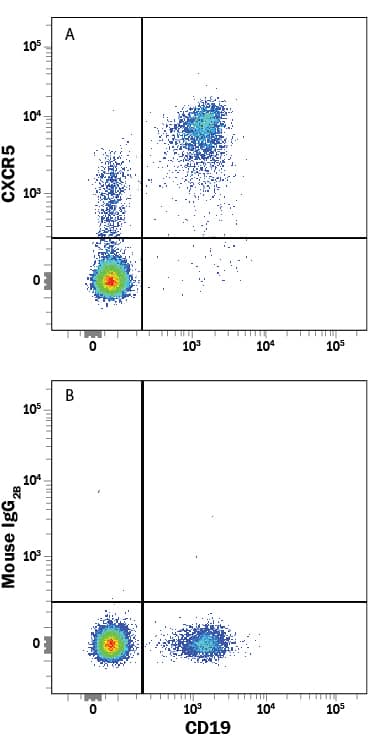

![Western Blot: CXCR5 Antibody (JB11-40) [NBP2-75460] Western Blot: CXCR5 Antibody (JB11-40) [NBP2-75460]](https://resources.bio-techne.com/images/products/CXCR5-Antibody-JB11-40-Western-Blot-NBP2-75460-img0006.jpg)
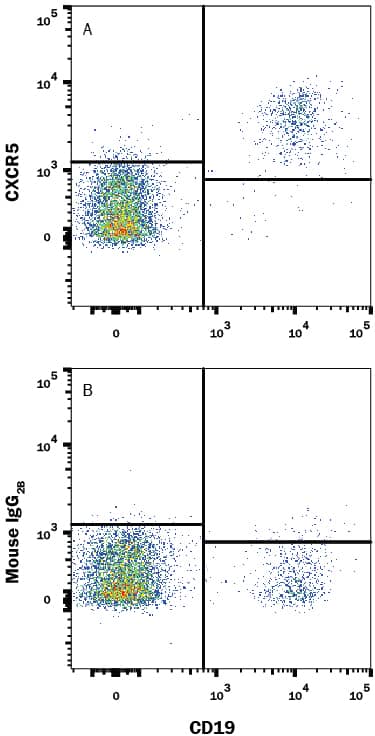
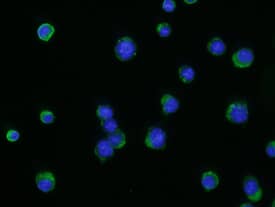
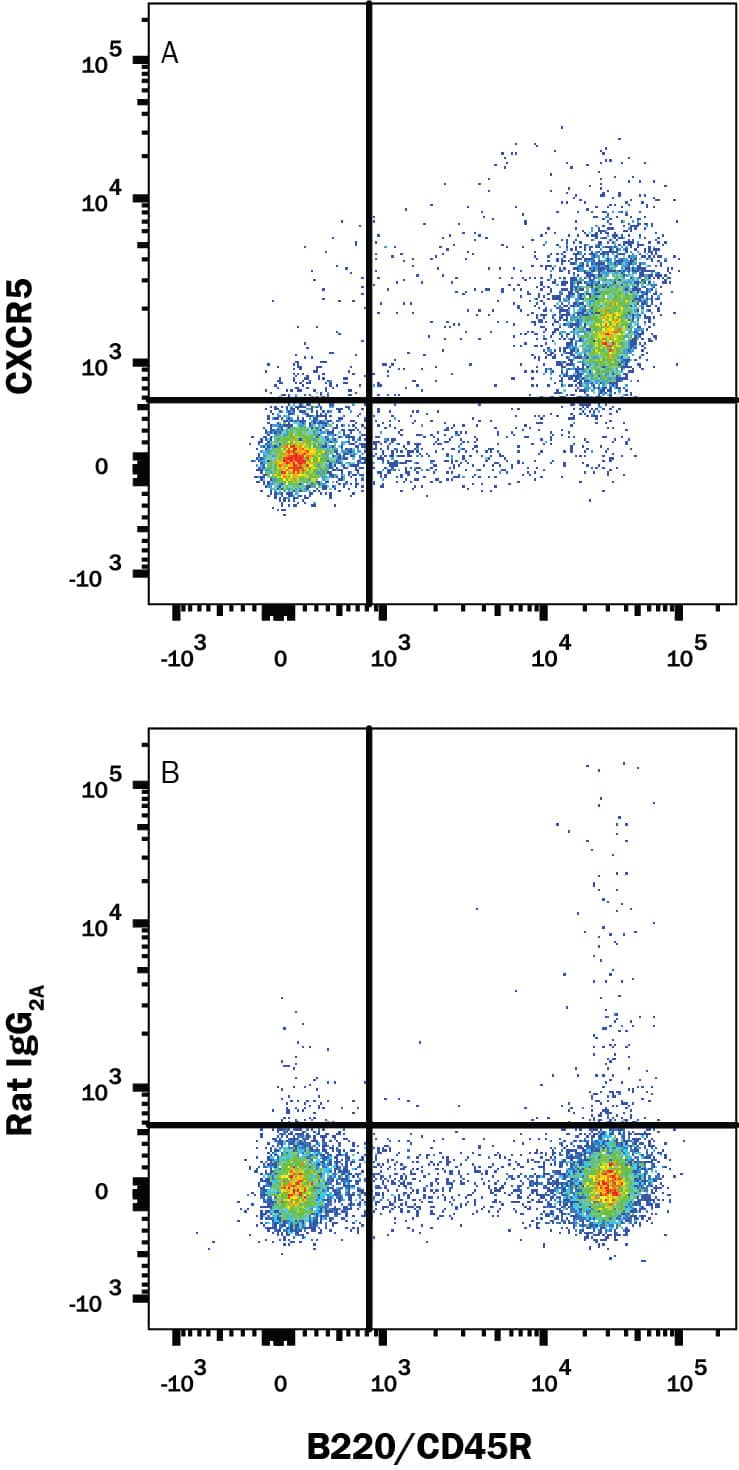
![Immunohistochemistry-Paraffin: CXCR5 Antibody - BSA Free [NLS1384] Immunohistochemistry-Paraffin: CXCR5 Antibody - BSA Free [NLS1384]](https://resources.bio-techne.com/images/products/CXCR5-Antibody-Immunohistochemistry-Paraffin-NLS1384-img0008.jpg)
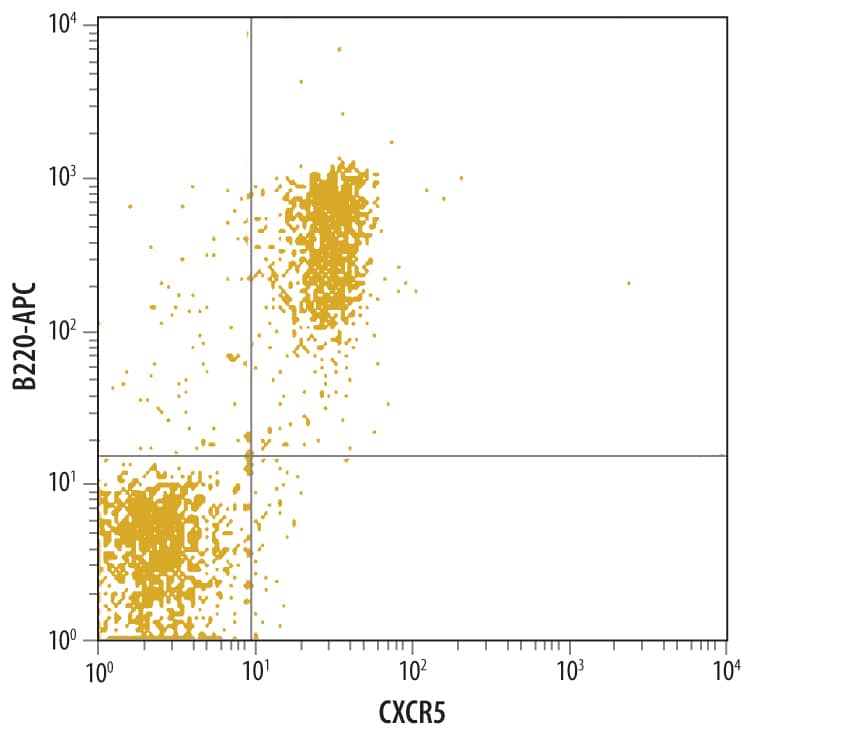
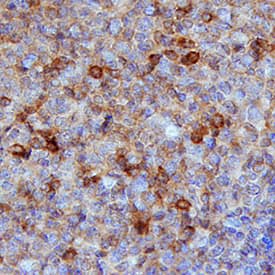
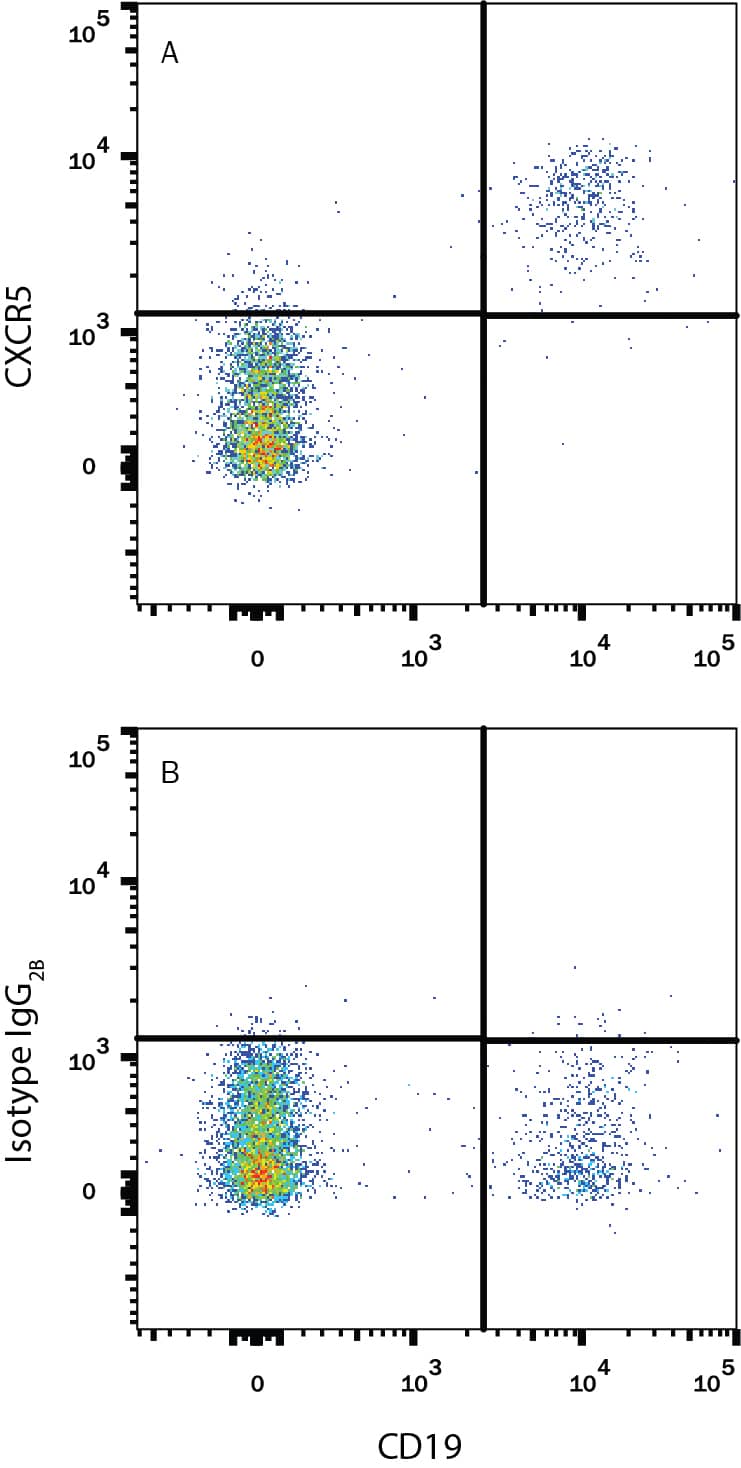
![Western Blot: CXCR5 Antibody (9Q10I2) [NBP3-16723] Western Blot: CXCR5 Antibody (9Q10I2) [NBP3-16723]](https://resources.bio-techne.com/images/products/CXCR5-Antibody-9Q10I2-Western-Blot-NBP3-16723-img0003.jpg)